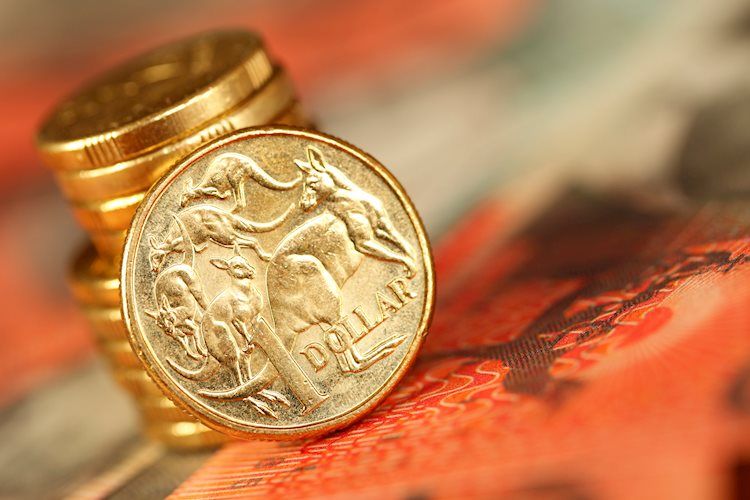
- Australian Dollar weakened on Fed’s hawkish remarks on interest rates trajectory.
- Australia’s Retail Sales improved with a 0.3% rise in the fourth quarter against 0.2% prior.
- RBA is expected to maintain the OCR at 4.35% at February’s meeting.
- US Dollar surged as ISM Services PMI rose to 53.4, surpassing the expected figure of 52.0.
The Australian Dollar (AUD) attempts to retrace its recent losses on Tuesday. The pair weakens due to hawkish comments from Federal Reserve (Fed) Chair Jerome Powell, coupled with anticipations of a dovish stance from the Reserve Bank of Australia (RBA) on Tuesday. Additionally, the Aussie Dollar (AUD) faces downward pressure from reduced commodity prices, contributing to the weakening of the AUD/USD pair.
Australian Bureau of Statistics released Retail Sales (QoQ) data on Tuesday, indicating an improvement with a 0.3% rise in the fourth quarter compared to the previous growth of 0.2%. Looking ahead, the Reserve Bank of Australia (RBA) is expected to announce its first monetary policy decision for 2024, with the anticipation of maintaining the Official Cash Rate (OCR) at 4.35%.
The Australian economy is going through a cost-of-living crisis, there appears to be limited room for RBA policymakers to raise interest rates further. Instead, the focal point now shifts to when the central bank might commence reducing interest rates. Investors will closely monitor RBA Governor Michele Bullock’s upcoming speech on the monetary policy outlook, seeking additional insights into the central bank’s stance and potential future actions.
The US Dollar Index (DXY) experienced a notable surge following the Federal Reserve’s hawkish stance, driven by robust ISM Services data for January. The ISM Services PMI exceeded expectations, registering at 53.4, surpassing both the consensus figure of 52.0 and the previous month’s 50.5. Additionally, the ISM Services Employment Index saw an improvement, rising to 50.5 from the previous reading of 43.8.
Federal Reserve Chairman Jerome Powell contributed to the strengthening of the US Dollar by dampening expectations of a rate cut. Powell underscored the importance of monitoring inflation’s sustained movement toward the 2% core target. This stance led to an increase in US Treasury yields, putting downward pressure on the AUD/USD pair.
Daily Digest Market Movers: Australian Dollar weakens on Fed’s hawkish stance
- Australian Trade Balance (MoM) for January was reduced to the figure of 10,959M compared to the revised figure of 11,764M in December.
- Australia’s Judo Bank Composite Purchasing Managers Index (PMI) improved to 49 in January from 48.1 prior. The Services PMI saw an improvement, rising to 49.1 from the previous figure of 47.9.
- Aussie TD Securities Inflation (YoY) grew by 4.6%, against the previous growth of 5.2%.
- Australian TD Securities Inflation (MoM) grew by 0.3% in January, lower than the December’s rise of 1.0%.
- Chinese Caixin Services PMI reduced to 52.7 in January from the previous reading of 52.9.
- US ISM Services Prices Paid rose to the reading of 64.0 in January, from December’s reading of 56.7.
- The US Services New Orders Index for January improved to 55.0 from the previous figure of 52.8.
- US S&P Global Composite PMI came in at 52.0 in January, slightly lower than the 52.3 prior.
Technical Analysis: Australian Dollar could test the psychological level of 0.6500
The Australian Dollar trades around 0.6490 on Tuesday, positioned below the resistance level of 0.6500. A potential breach above this level could serve as a catalyst for the AUD/USD pair to test the resistance zone near the major level at 0.6550. Subsequently, further upward movement may lead to encounters with the 23.6% Fibonacci retracement level at 0.6563, ultimately reaching the 21-day Exponential Moving Average (EMA) at 0.6587. On the downside, immediate support is anticipated at the psychological level of 0.6450 following another psychological support level at 0.6400.
AUD/USD: Daily Chart
Australian Dollar price today
The table below shows the percentage change of Australian Dollar (AUD) against listed major currencies today. Australian Dollar was the strongest against the US Dollar.
| USD | EUR | GBP | CAD | AUD | JPY | NZD | CHF | |
| USD | -0.01% | -0.07% | -0.10% | -0.12% | -0.05% | -0.08% | 0.00% | |
| EUR | 0.01% | -0.06% | -0.11% | -0.11% | -0.06% | -0.08% | 0.00% | |
| GBP | 0.07% | 0.06% | -0.04% | -0.06% | 0.00% | 0.00% | 0.06% | |
| CAD | 0.09% | 0.10% | 0.04% | -0.02% | 0.05% | 0.02% | 0.11% | |
| AUD | 0.12% | 0.11% | 0.05% | 0.02% | 0.05% | 0.04% | 0.12% | |
| JPY | 0.06% | 0.06% | 0.00% | -0.05% | -0.09% | -0.02% | 0.06% | |
| NZD | 0.10% | 0.08% | 0.02% | -0.02% | -0.04% | 0.02% | 0.08% | |
| CHF | 0.00% | 0.00% | -0.07% | -0.10% | -0.11% | -0.06% | -0.08% |
The heat map shows percentage changes of major currencies against each other. The base currency is picked from the left column, while the quote currency is picked from the top row. For example, if you pick the Euro from the left column and move along the horizontal line to the Japanese Yen, the percentage change displayed in the box will represent EUR (base)/JPY (quote).
Economic Indicator
Australia RBA Interest Rate Decision
The Reserve Bank of Australia (RBA) announces its interest rate decision at the end of its eight scheduled meetings per year. If the RBA is hawkish about the inflationary outlook of the economy and raises interest rates it is usually bullish for the Australian Dollar (AUD). Likewise, if the RBA has a dovish view on the Australian economy and keeps interest rates unchanged, or cuts them, it is seen as bearish for AUD.
